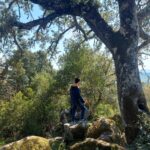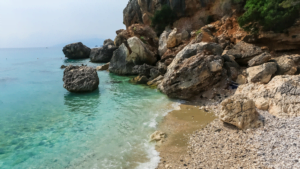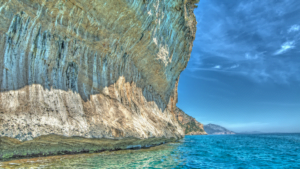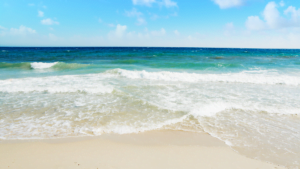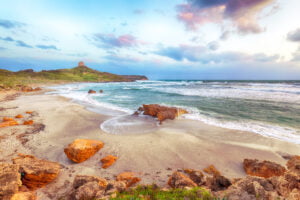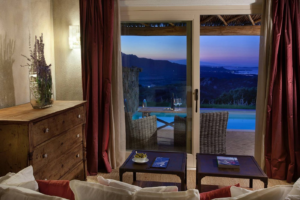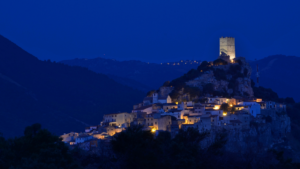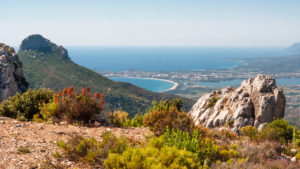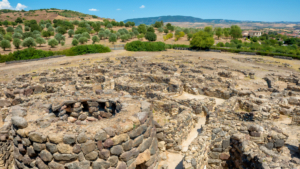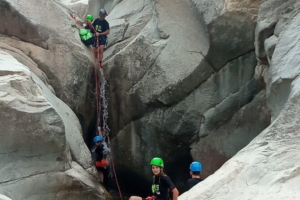Bosa is a picturesque town located on the western coast of Sardinia, Italy. It is uniquely positioned along the Temo River, the only navigable river in Sardinia, which adds to its charm and scenic beauty. The town is known for its colorful houses that line the hillside, medieval architecture, and a vibrant local culture. Bosa’s historic center, Sa Costa, is characterized by narrow cobblestone streets, traditional Sardinian houses, and a wealth of historical landmarks, making it a captivating destination for visitors.
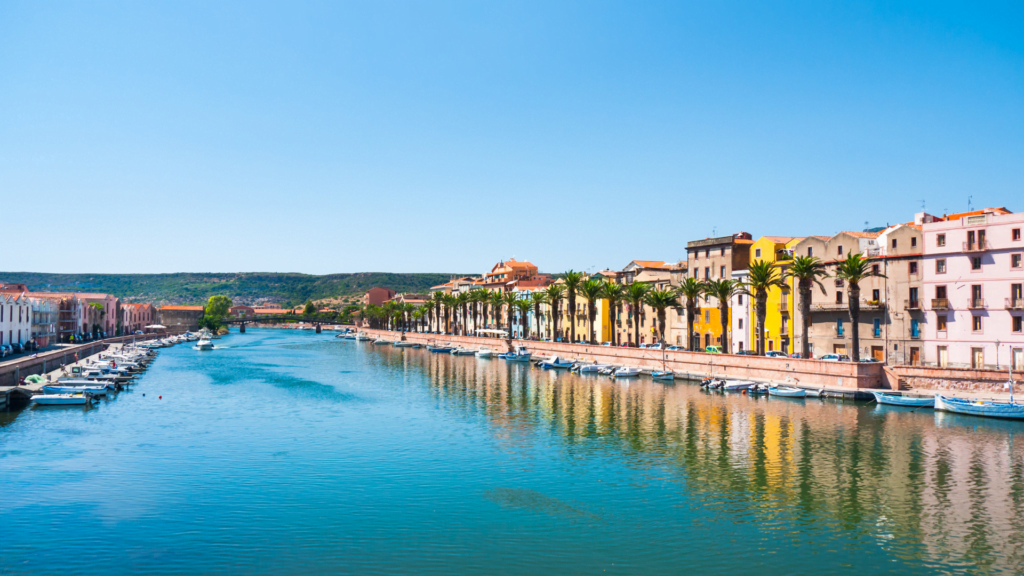
Bosa is an essential travel destination for those looking to experience the authentic culture and history of Sardinia. Its historical significance is highlighted by the impressive Malaspina Castle, which dates back to the 12th century, offering panoramic views of the town and the surrounding landscape. Bosa is also renowned for its well-preserved medieval architecture and significant cultural sites, such as the Cathedral of Bosa and various ancient churches with stunning frescoes and artworks.
The town is celebrated for its local cuisine, particularly seafood and traditional Sardinian dishes, which can be enjoyed in numerous charming restaurants and cafes. Bosa’s wine production, especially the famous Malvasia di Bosa, is another draw for visitors interested in oenology.
Bosa also offers various outdoor activities, including exploring the beautiful beaches of Bosa Marina, boat trips along the Temo River, and hiking in the surrounding countryside. The town also hosts several festivals and events throughout the year, providing a unique opportunity to experience local traditions and festivities.
The Beaches
The waters that lap the beaches of Bosa are famous for their clarity, making them ideal for activities such as swimming, snorkeling, and diving. It is not uncommon to see schools of fish swimming in the shallow waters, making the snorkeling experience even more exciting.
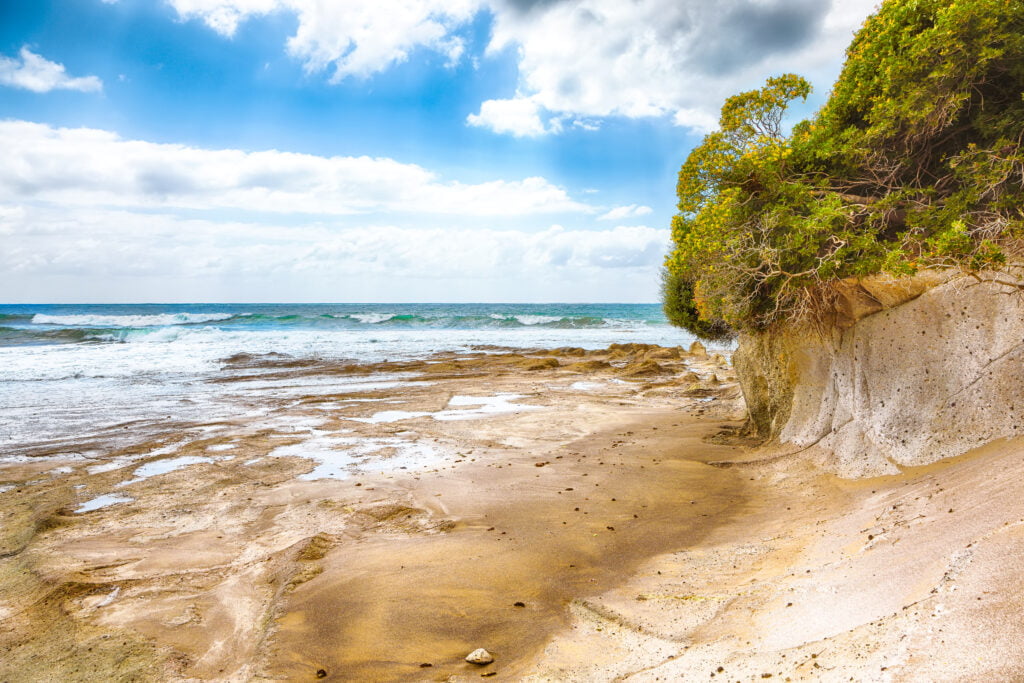

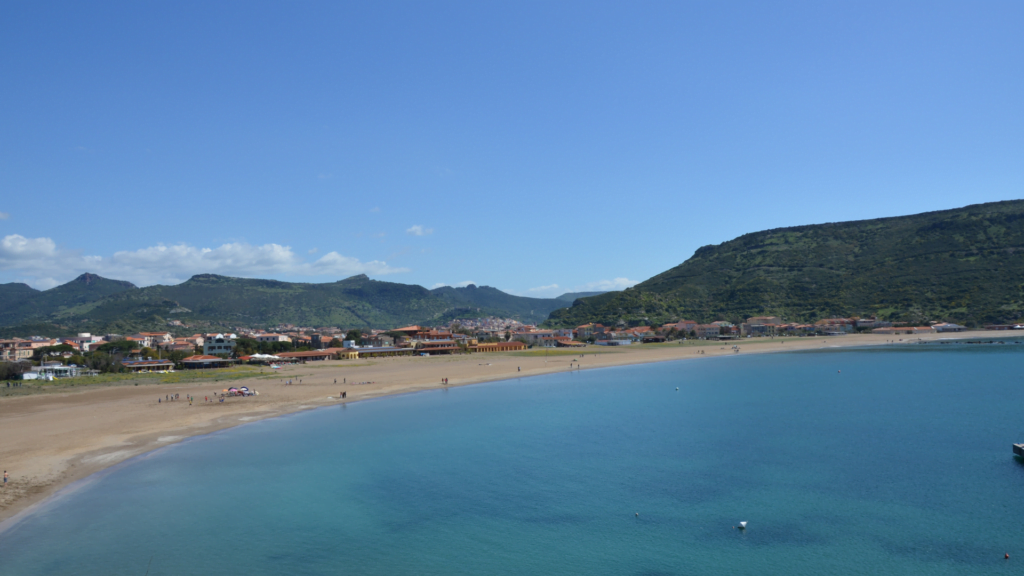

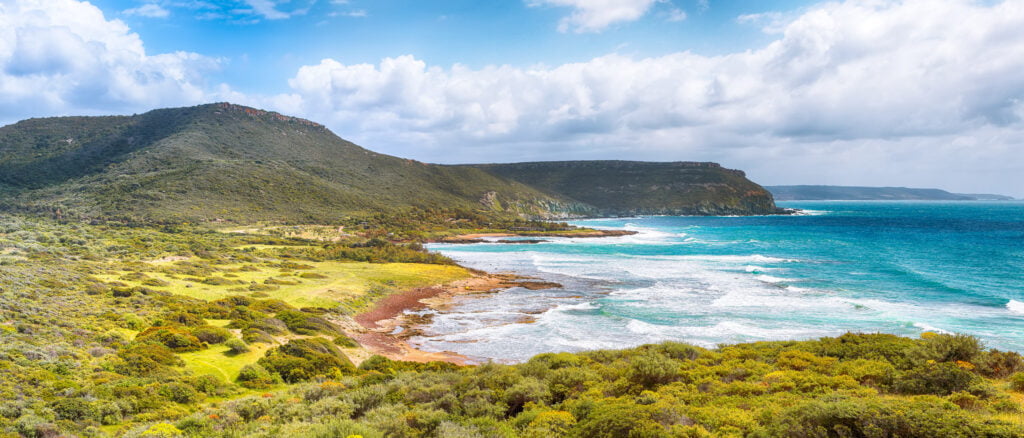

Cane Malu
Cane Malu is a beach loved by both locals and tourists. It is particularly appreciated for its crystal-clear waters, ideal for swimming. The surrounding rocks are rich in marine life, making this place a paradise for snorkeling enthusiasts.
Bosa Marina Beach
This beach is easily accessible by car or public transport. Bosa Marina Beach is known for its golden sand and blue waters. This beach is perfect for families and those who love convenience, thanks to the numerous amenities available, including bars, restaurants, and water sports equipment rentals.
A distinctive feature of Bosa Marina Beach is the Bosa Tower, a historic landmark that stands majestically on the beach. This 16th-century watchtower offers a panoramic view of the beach and the sea, making it a perfect spot for memorable photos.
Turas Beach
A short distance from Bosa Marina is Turas Beach, another gem of Bosa. This beach is a bit quieter and offers a relaxed atmosphere, ideal for those seeking some peace and tranquility. The sand is fine and golden, the water is clear, and the surrounding hills provide a beautiful backdrop.
Compoltitu Beach
Compoltitu Beach is a small hidden paradise along the road connecting Bosa to Alghero. Despite being a bit secluded, it is worth seeking out to enjoy a peaceful and relaxing atmosphere.
S’Abba Druche Beach
S’Abba Druche is a wide bay with a small port, cozy cafes, and walking trails. It is an ideal place to relax, especially during the off-season when it is less crowded.
Cala ‘e Moro and Cala Managu
These are two other beaches in Bosa worth visiting. They are less known but offer breathtaking landscapes and crystal-clear waters.
Exploring the Old Town
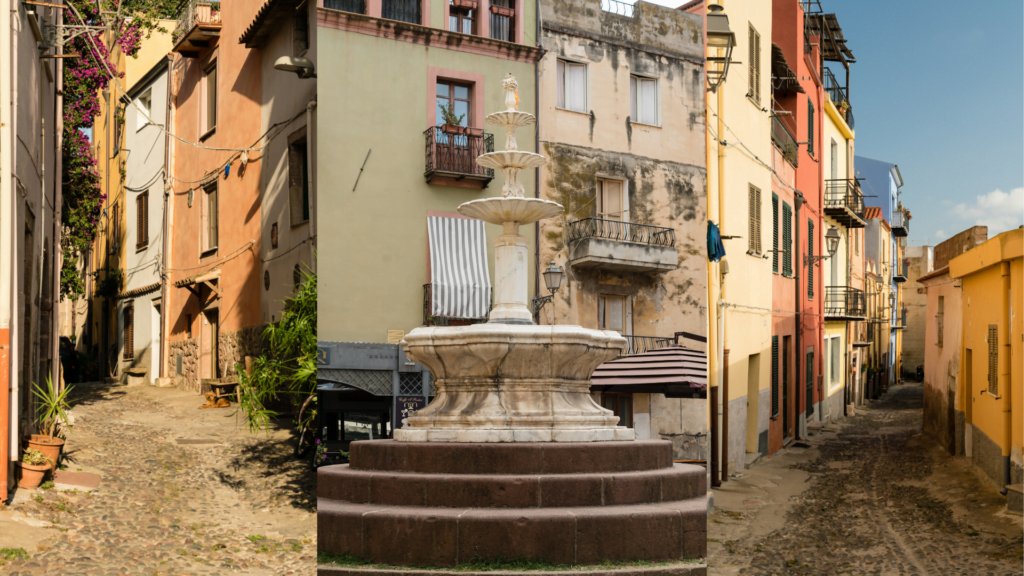

Sa Costa: Colorful Houses, Medieval Architecture, Temo River Views
Sa Costa
- Colorful Houses: Sa Costa, the historic district of Bosa, is renowned for its vibrant, colorful houses that cascade down the hillside. These homes are painted in various hues, creating a picturesque and cheerful atmosphere that is perfect for photography and leisurely strolls.
- Medieval Architecture: The narrow, winding streets of Sa Costa are lined with medieval buildings, showcasing the town’s rich history. Many of these structures have retained their original features, such as stone facades, wooden shutters, and terracotta roofs.
- Temo River Views: The Temo River, which flows through Bosa, adds to the town’s charm. Visitors can enjoy stunning views of the river from various vantage points in Sa Costa. Walking along the riverbanks offers a peaceful experience, with opportunities to see traditional boats and lush greenery.
Corso Vittorio Emanuele II: Main Street with Shops, Cafes, and Historical Buildings
Corso Vittorio Emanuele II
- Main Street: Corso Vittorio Emanuele II is the main street in Bosa’s old town and serves as the central hub for both locals and tourists. It is a lively area filled with shops, cafes, and restaurants, making it the perfect place to experience the town’s vibrant atmosphere.
- Shops: The street is lined with a variety of shops offering local crafts, souvenirs, and Sardinian products. Visitors can find handmade jewelry, ceramics, and textiles, which make for unique and authentic gifts.
- Cafes and Restaurants: Numerous cafes and restaurants along Corso Vittorio Emanuele II provide ample opportunities to relax and enjoy local cuisine. Outdoor seating areas allow diners to soak in the historic ambiance while savoring Sardinian specialties.
- Historical Buildings: Many historical buildings are located along Corso Vittorio Emanuele II, each with its own unique story and architectural style. Highlights include well-preserved medieval houses and charming squares. The street itself is a testament to Bosa’s rich cultural heritage, with its cobblestone pavement and traditional Sardinian architecture.
Historical Sites
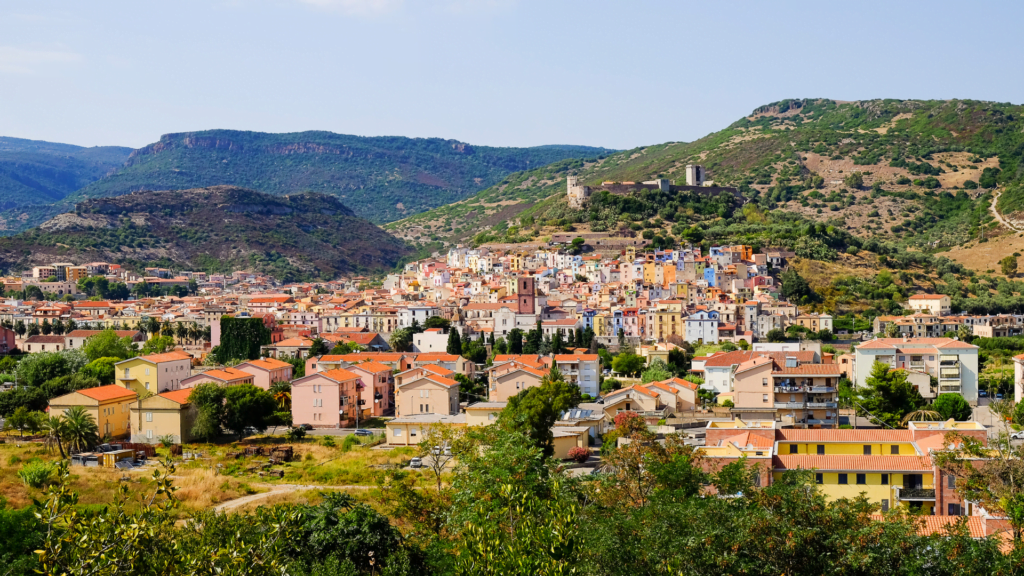

Malaspina Castle: History, Key Features, and Visiting Details
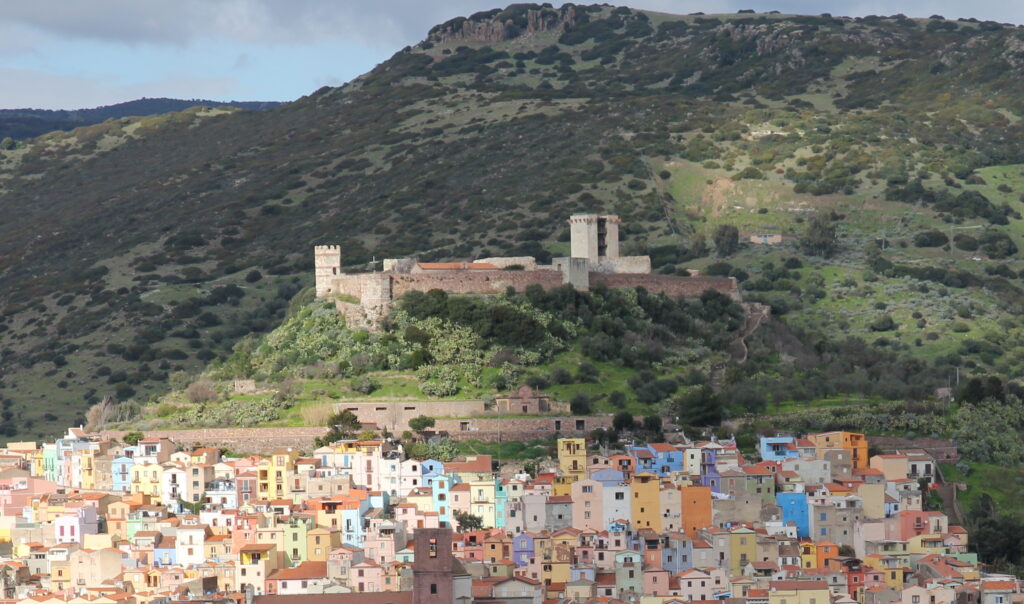

History
- Origins: Malaspina Castle, also known as Castello di Serravalle, dates back to the 12th century. It was built by the Malaspina family, a powerful noble family from Tuscany, to protect their lands and assert their dominance in the region.
- Strategic Importance: The castle played a crucial role in the defense of Bosa and its surrounding areas. Its elevated position provided strategic advantages, offering extensive views over the town and the Temo River.
Key Features
- Architecture: The castle retains much of its original medieval architecture, including robust stone walls, towers, and a central keep. The design reflects the military architecture of the period, with features meant for defense and surveillance.
- Palatine Chapel: Within the castle grounds, visitors can find the Palatine Chapel, dedicated to Our Lady of Regnos Altos. The chapel is known for its beautiful 14th-century frescoes, which depict various religious scenes.
- Views: One of the most striking aspects of visiting Malaspina Castle is the panoramic view it offers. From the castle, you can see the entirety of Bosa, the Temo River, and the surrounding countryside, making it a perfect spot for photography.
Visiting Details
- Opening Hours: The castle is open to the public year-round, although opening hours may vary depending on the season. It’s advisable to check the current schedule before planning your visit.
- Admission: Tickets are required to enter the castle. A combined ticket that includes access to the Palatine Chapel and other historical sites within the castle grounds is available at a reasonable price.
- Guided Tours: Guided tours are offered and highly recommended to gain deeper insights into the history and significance of the castle and its features.
Churches: Cathedral of Bosa, Palatine Chapel, and Church of San Pietro
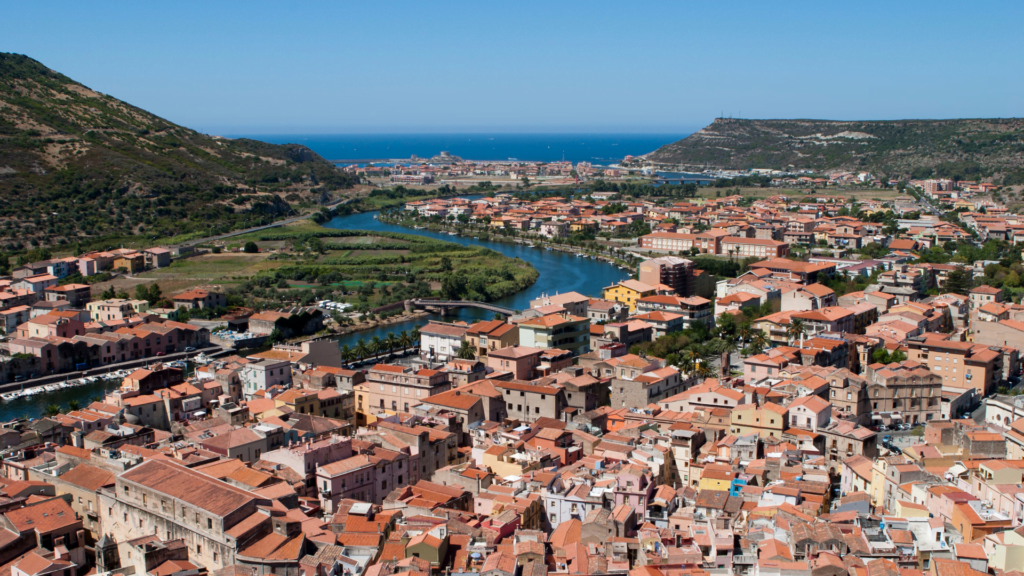

Cathedral of Bosa
- History: The Cathedral of Bosa, also known as the Cathedral of the Immaculate Conception, dates back to the 12th century, though it has undergone several renovations and expansions over the centuries.
- Architecture: The cathedral features a blend of architectural styles, including Romanesque, Gothic, and Baroque elements. Its interior is adorned with intricate frescoes, marble altars, and a notable organ.
- Significance: As the main place of worship in Bosa, the cathedral holds a central place in the town’s religious and cultural life. It is a must-visit for its historical and architectural value.
Palatine Chapel
- Location: Situated within Malaspina Castle, the Palatine Chapel is dedicated to Our Lady of Regnos Altos.
- Artistic Highlights: The chapel is renowned for its 14th-century frescoes, which are among the best-preserved examples of medieval religious art in Sardinia. These frescoes depict scenes from the life of Christ and various saints.
- Visiting: Access to the chapel is included with the castle ticket. The chapel’s serene atmosphere and historical significance make it a highlight of any visit to the castle.
Church of San Pietro
- History: The Church of San Pietro, located just outside the main town, is one of the oldest churches in Sardinia, dating back to the 11th century.
- Architecture: This Romanesque church features simple yet elegant architectural lines, with a single nave and a semicircular apse. Its austere facade and interior contrast with the more ornate style of later churches.
- Cultural Importance: The Church of San Pietro is significant for its historical and religious importance, being one of the earliest centers of Christian worship in the region. It often hosts local festivals and religious ceremonies.
Museums and Cultural Attractions
Museum of Bosa: Local History, Archaeological Artifacts, Traditional Crafts
Local History
- Overview: The Museum of Bosa, also known as the Museo Casa Deriu, provides an in-depth look into the town’s rich history and cultural heritage. It is housed in a beautifully preserved 19th-century building in the historic center of Bosa.
- Historical Exhibits: The museum’s exhibits cover various periods of Bosa’s history, from its prehistoric origins to modern times. Displays include photographs, documents, and artifacts that tell the story of the town and its development over the centuries.
Archaeological Artifacts
- Prehistoric to Roman Periods: The museum features a collection of archaeological artifacts that highlight the ancient history of the region. These include tools, pottery, and other items from the prehistoric Nuragic civilization, as well as Roman relics that showcase the area’s importance during ancient times.
- Medieval and Renaissance Finds: Artifacts from the medieval and Renaissance periods provide insights into the daily lives and culture of the people who lived in Bosa during these eras. Items on display include ceramics, coins, and other everyday objects.
Traditional Crafts
- Textiles and Weaving: One of the highlights of the Museum of Bosa is its extensive collection of traditional Sardinian textiles and weaving tools. Bosa has a long history of textile production, and the museum showcases beautifully crafted pieces, including traditional costumes, tapestries, and lacework.
- Tanning Industry: The museum also delves into Bosa’s historical tanning industry, which was a significant part of the local economy. Exhibits include tools and products related to leatherworking and tanning processes.
- Craftsmanship Displays: Visitors can explore various traditional crafts that have been passed down through generations. This includes intricate jewelry, ceramics, and other artisanal products that reflect the unique cultural heritage of Bosa and Sardinia.
Visiting Details
- Location: The museum is centrally located in Bosa’s old town, making it easily accessible for visitors exploring the historic district.
- Opening Hours: The museum is open to the public year-round, though hours may vary by season. It is recommended to check the museum’s official website or local tourist information for current opening times.
- Admission Fees: There is a nominal fee for entry, with discounts available for children, students, and seniors. Group tours and educational visits can often be arranged in advance.
Accommodation


Hotels
- Comfort and Convenience: Hotels in Bosa range from budget-friendly options to luxurious establishments, offering various amenities like on-site restaurants, swimming pools, and concierge services.
- Examples:
- Villa Asfodeli: A beautifully restored villa offering luxury accommodation with a pool, garden, and panoramic views of the surrounding area. It’s perfect for larger groups or families.
- Corte Fiorita Albergo Diffuso: This unique hotel is spread across several historic buildings in Bosa’s old town. It offers spacious rooms and suites, combining modern amenities with historical architecture.
- Hotel Sa Lumenera: Located near Bosa Marina, this hotel offers easy access to the beach and provides amenities such as an outdoor pool, restaurant, and comfortable rooms with sea views.
- Villa Asfodeli: A beautifully restored villa offering luxury accommodation with a pool, garden, and panoramic views of the surrounding area. It’s perfect for larger groups or families.
Bed and Breakfasts (B&Bs)
- Charm and Authenticity: B&Bs in Bosa offer a more personal and authentic experience. These accommodations are often run by locals and provide insights into Sardinian life and culture.
- Examples:
- Palazzo Pischedda: This boutique B&B is set in a historic building and offers stunning views of the Temo River and Malaspina Castle. It combines historic ambiance with modern comfort.
- B&B Alene: Located in the heart of Bosa’s historic center, this B&B offers cozy rooms with modern amenities while retaining traditional charm. It’s known for its friendly hosts and delicious homemade breakfast.
Where is Bosa?
Bosa is located in the province of Oristano, on the west coast of Sardinia, Italy. It is situated about two-thirds of the way up the west coast of Sardinia, on a small hill, about 3 kilometers (2 miles) inland on the north bank of the Temo River.
Getting to Bosa
Transportation Options
Car Rental
- Flexibility and Convenience: Renting a car is a popular option for visitors to Bosa, offering the flexibility to explore the surrounding areas at your own pace. Several car rental companies operate in nearby towns and cities, including Alghero, which is a common entry point for international travelers.
- Availability: Car rental services are available at Alghero Airport and in major towns, making it easy to pick up a vehicle upon arrival.
Public Transportation
- Buses: Buses connect Bosa with other Sardinian towns such as Alghero and Oristano. However, services can be infrequent, especially on weekends and holidays, so it is advisable to check the schedule in advance.
- Trains: There is no direct train service to Bosa, but nearby towns are accessible by train, from where you can continue your journey by bus or car.
Taxis
- Convenience: Taxis are available but can be more expensive than other transportation options. They are ideal for short trips or if you are traveling in a group.
- Booking: It is recommended to book taxis in advance, especially during peak tourist seasons.
Directions from Major Points
From Alghero
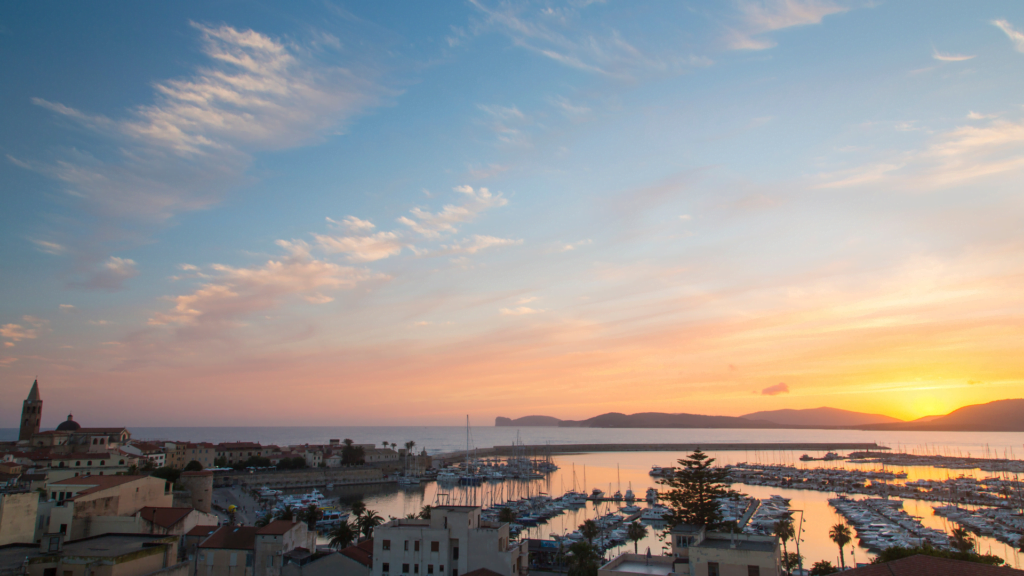

- Distance: Approximately 45 kilometers (28 miles).
- Route:
- Start by heading south on the SP44 from Alghero.
- Continue on SP42 for a few kilometers until you reach the signs for SP105.
- Follow SP105, which will take you along the scenic coastal route, offering stunning views of the Mediterranean Sea.
- Continue on SP105 for about 20 kilometers (12 miles) until you reach Bosa.
- Estimated Travel Time: Around 1 hour, depending on traffic and road conditions.
From Oristano
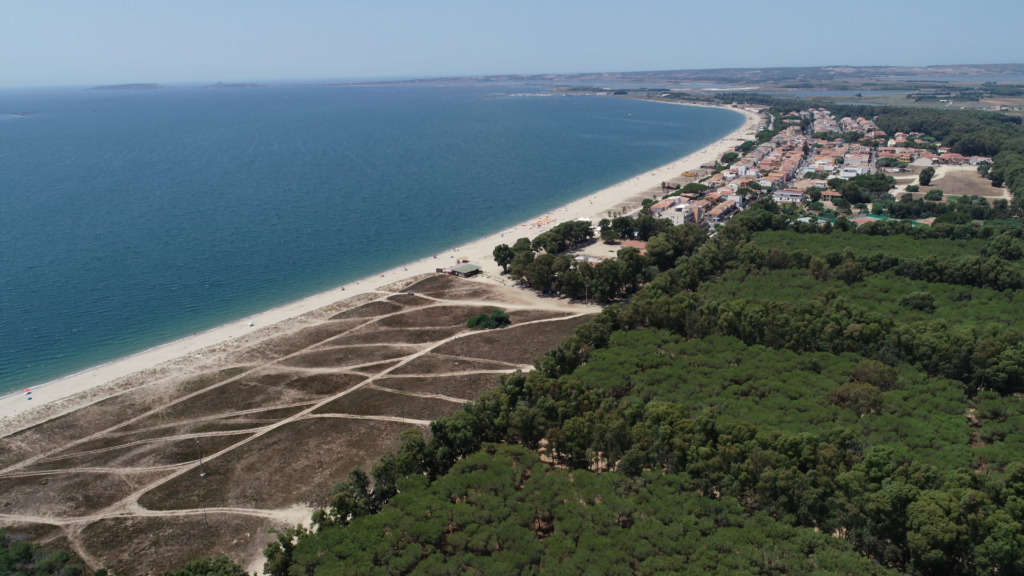

- Distance: Approximately 60 kilometers (37 miles).
- Route:
- Take the SS292 north from Oristano.
- Continue on this road as it winds through the picturesque Sardinian countryside.
- Follow the signs for Bosa as you approach the town.
- Estimated Travel Time: About 1 hour and 15 minutes.
From Cagliari
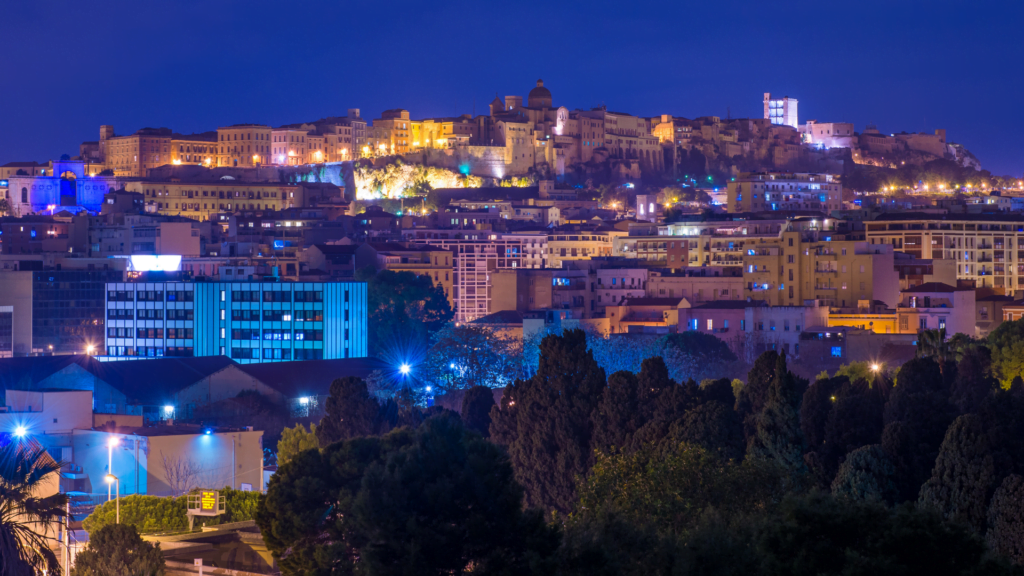

- Distance: Approximately 150 kilometers (93 miles).
- Route:
- Take the SS131 north from Cagliari.
- At the junction for Macomer, switch to the SS129 towards Bosa.
- Follow the signs to Bosa.
- Estimated Travel Time: Around 2 hours and 30 minutes.
Outdoor Activities
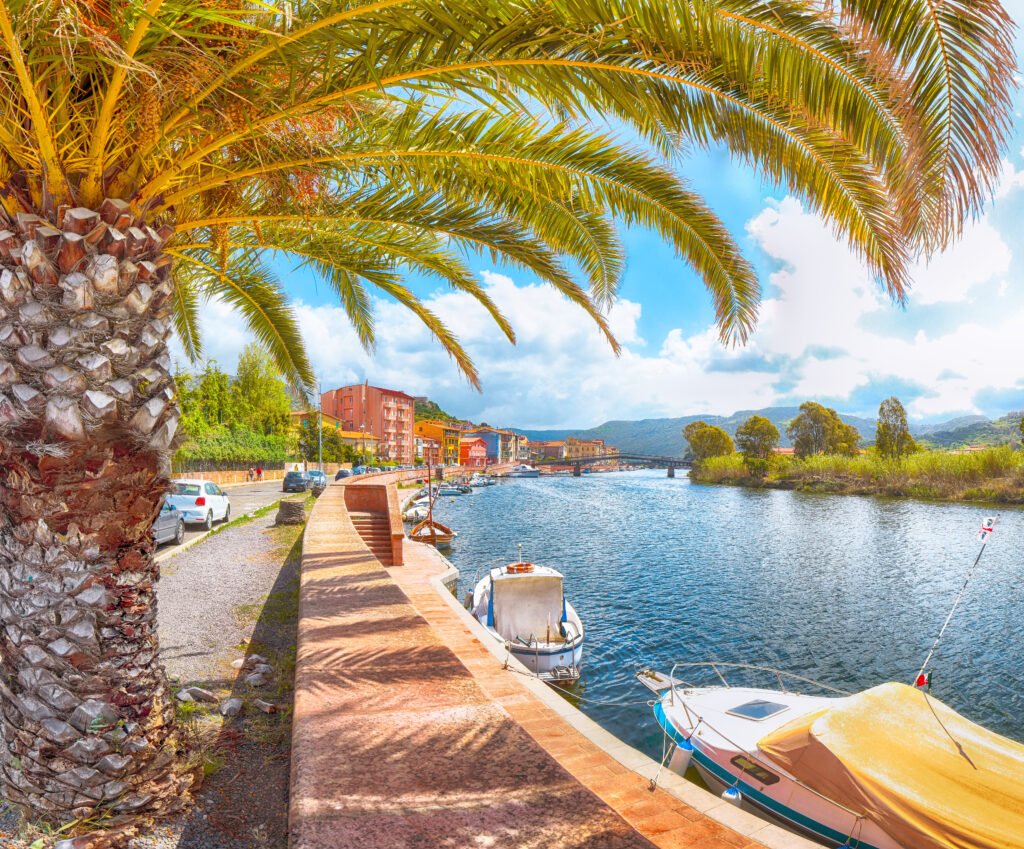

Bosa Marina: Beach Activities, Water Sports
Beach Activities
- Relaxation: Bosa Marina offers a beautiful sandy beach where visitors can relax and soak up the sun. The beach is known for its golden sand and clear, shallow waters, making it an ideal spot for families and sunbathers.
- Swimming: The calm and clean waters of Bosa Marina are perfect for swimming. Lifeguards are typically on duty during peak seasons, ensuring a safe environment for swimmers of all ages.
Water Sports
- Kayaking and Paddleboarding: The gentle waters of Bosa Marina are ideal for kayaking and paddleboarding. Equipment can be rented from local vendors, and guided tours are available for those who prefer a structured experience.
- Snorkeling and Diving: The area around Bosa Marina offers excellent opportunities for snorkeling and diving. The underwater landscape is teeming with marine life, and several dive shops provide equipment rentals and diving excursions.
- Sailing and Boat Rentals: For those interested in exploring further out to sea, sailing and boat rentals are available. These activities offer a fantastic way to view the coastline and enjoy the Mediterranean Sea.
Boat Trips on the Temo River or Coastline
Temo River
- Scenic Boat Tours: Boat trips along the Temo River provide a unique perspective of Bosa and its surroundings. These tours often include historical insights and stories about the town’s past. Visitors can enjoy the serene landscape and the charming riverside architecture.
- Wildlife Watching: The Temo River is home to various bird species and other wildlife. Boat trips often provide opportunities for bird watching and photography, allowing visitors to connect with nature.
Coastline Excursions
- Coastal Cruises: Cruises along the Sardinian coastline offer breathtaking views of cliffs, hidden coves, and picturesque beaches. These trips are perfect for those looking to explore the natural beauty of the region.
- Fishing Trips: For those interested in fishing, several local operators offer fishing trips along the coast. These excursions cater to both beginners and experienced anglers, providing all necessary equipment and guidance.
Hiking and Nature Excursions in the Surrounding Countryside
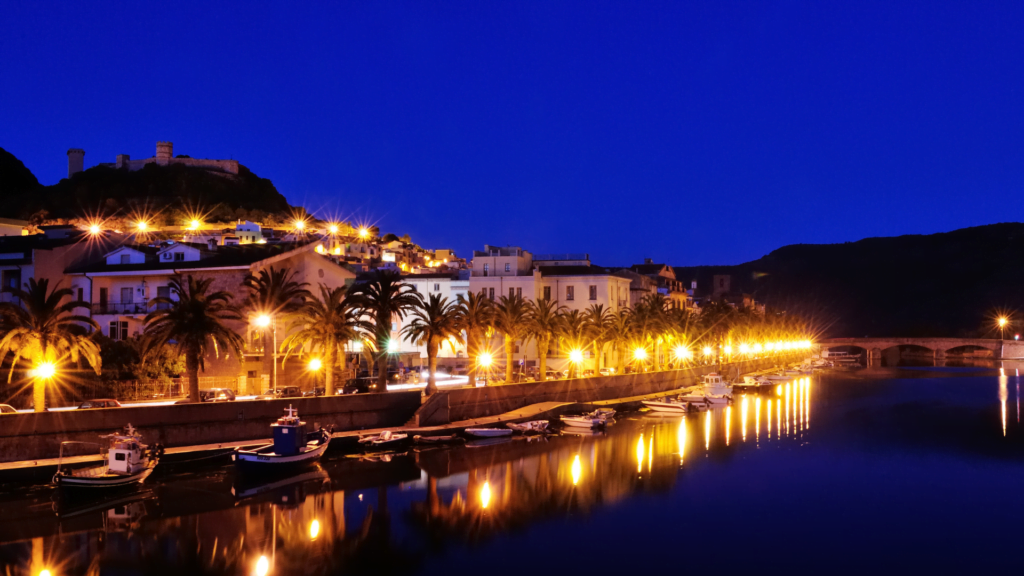

Hiking Trails
- Monte Mannu: This popular hiking destination offers trails that range from easy to challenging. Hikers are rewarded with stunning panoramic views of Bosa, the coastline, and the surrounding countryside.
- Natural Parks: The nearby natural parks, such as the Parco di Tepilora, offer numerous trails that wind through diverse landscapes, including forests, rivers, and mountains. These parks are perfect for nature lovers and outdoor enthusiasts.
Nature Excursions
- Guided Nature Walks: Local guides offer nature walks that highlight the flora and fauna of the region. These excursions are educational and provide insights into the local ecosystem and conservation efforts.
- Bird Watching: The area around Bosa is a haven for bird watchers. Excursions to nearby wetlands and nature reserves offer opportunities to spot various bird species, including some that are rare or endangered.
Wine Tasting
Malvasia di Bosa
- Grape Variety: Malvasia di Bosa is made from the Malvasia grape, a variety known for its aromatic qualities and versatility in producing both sweet and dry wines.
- Wine Characteristics: Malvasia di Bosa typically exhibits a rich, golden color and a complex bouquet with notes of dried fruit, honey, and almonds. The wine can range from dry to sweet, with the sweet versions being particularly prized for their depth and balance.
- Production Methods: Traditional winemaking techniques are still prevalent in Bosa, with many producers emphasizing organic and sustainable practices. The wines are often aged in oak barrels, which adds to their complexity and longevity.
Visiting Vineyards and Wineries
Exploring the vineyards and wineries around Bosa offers a unique opportunity to experience the region’s winemaking traditions firsthand.
Key Winery
- Tenute Dettori: Located a short drive from Bosa, Tenute Dettori is known for its commitment to organic and biodynamic farming. The winery produces a variety of wines, including Malvasia, and offers tastings and tours that highlight their sustainable practices.
Wine Tasting Experiences
- Guided Tours: Many wineries offer guided tours that provide an in-depth look at the winemaking process. These tours typically include visits to the vineyards, production facilities, and cellars, followed by a tasting session.
- Wine Tastings: Tastings are an integral part of the winery visit, allowing guests to sample different vintages and styles of Malvasia di Bosa. Expert sommeliers often lead these tastings, providing insights into the wine’s characteristics and pairing suggestions.
- Food Pairings: Some wineries offer food pairing experiences, where local delicacies are paired with different wines. These pairings enhance the tasting experience, showcasing how Malvasia di Bosa complements Sardinian cuisine.
Vineyard Walks
- Scenic Views: The vineyards around Bosa are set against a backdrop of rolling hills and the Mediterranean Sea, offering stunning views and a tranquil atmosphere. Walking through the vineyards provides a deeper connection to the land and the winemaking process.
- Educational Insights: During vineyard walks, visitors can learn about the specific grape varieties grown, the terroir, and the viticultural techniques employed by the winemakers.
Festivals and Events
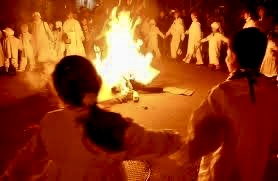

August Procession: Our Lady of Regnos Altos
- Overview: One of the most significant events in Bosa is the August procession in honor of Our Lady of Regnos Altos, also known as the Virgin Mary, Protector of the Sea. This festival is deeply rooted in the town’s history and religious traditions.
- Activities: The procession involves a statue of the Virgin Mary being carried through the streets of Bosa, accompanied by locals dressed in traditional costumes. The event is marked by prayers, songs, and various religious ceremonies. The procession culminates in a riverside celebration, reflecting the town’s strong connection to the sea.
- Cultural Significance: This procession is not only a religious observance but also a vibrant display of local culture and community spirit. It is a time when the townspeople come together to celebrate their shared heritage and faith.
Carnival of Bosa
- Overview: Another major event in Bosa is its Carnival, which typically takes place in February. This festival is known for its unique blend of traditional and modern festivities, making it one of the most colorful and lively times of the year in Bosa.
- Activities: The carnival features parades, masquerades, music, dancing, and various performances. Traditional masks and costumes are a highlight, with participants often dressing in intricate and symbolic attire that reflects the town’s historical and cultural narratives.
- Cultural Significance: The Bosa Carnival is a significant event that showcases the creativity and cultural richness of the town. It attracts visitors from across Sardinia and beyond, eager to partake in the joyful celebrations.
San Giovanni Battista Festival
- Overview: Celebrated in June, the San Giovanni Battista Festival honors St. John the Baptist. This festival includes religious ceremonies, traditional music, and various local customs.
- Activities: Key events include a traditional bonfire, where locals gather to celebrate with food, music, and dance. The festival also features processions, religious services, and communal feasts.
- Cultural Significance: This festival is a blend of religious reverence and communal celebration, highlighting the strong community bonds and the town’s dedication to preserving its traditions.

